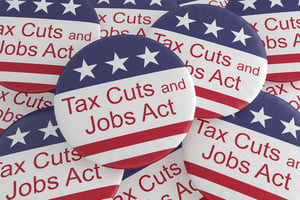The 'Qualified Improvement Property' Error Finally Corrected
 The Tax Cuts and Jobs Act of 2017 (TCJA) was one of the most consequential tax law changes of the last three decades. However, when it was passed, it expanded and reworked the definition of “qualified improvement property". The new definition contained a critical error, which we will explore below. That error has just been corrected with the passage of the CARES Act of 2020. Since the correction is retroactive, the IRS has released new information and new guidance for taxpayers to address these new changes. Here's what you need to know.
The Tax Cuts and Jobs Act of 2017 (TCJA) was one of the most consequential tax law changes of the last three decades. However, when it was passed, it expanded and reworked the definition of “qualified improvement property". The new definition contained a critical error, which we will explore below. That error has just been corrected with the passage of the CARES Act of 2020. Since the correction is retroactive, the IRS has released new information and new guidance for taxpayers to address these new changes. Here's what you need to know.
Defining "Qualified Improvement Property"
When the TCJA was passed in 2017, it expanded and reworked the definition of “qualified improvement property,” which was defined as:
"...interior improvements to existing nonresidential real property that are not structural items, elevators, or escalators."
Qualified leasehold improvement property, qualified restaurant property, and qualified retail property, which all had tax-favored status, were eliminated and rolled into this new category of “qualified improvement property.”
The clear intent of Congress in drafting the TCJA was to give this new category of property all the benefits of the previous classifications and more: a short tax life and the ability to use Section 168(k) accelerated depreciation (otherwise known as “bonus depreciation”).
An Error In the TCJA Regarding Qualified Improvement Property
However, due to the extreme haste under which the TCJA was drafted and passed, Congress apparently forgot to assign qualified improvement property a 15-year life as they had intended, which not only made such property ineligible for bonus depreciation but also changed some property classes to have a 39-year tax life as opposed to a 15-year tax life. This greatly reduced the cost recovery allowed for such property and disadvantaged taxpayers.
Congress realized its mistake and requested that the IRS fix this error through regulation, but the Service was unable to comply, as the mistake was in the passed law and out of the IRS’s jurisdiction to fix. Only now, after the passage of the CARES Act amid the COVID-19 pandemic, has qualified improvement property finally been assigned a 15-year life.
Revenue Procedure 2020-25 Addresses Tax Filing Questions
As the change is retroactive, taxpayers have an immediate question on their minds: if the 2018 or 2019 tax returns have been filed and reflect the treatment of qualified improvement property under the old rules, how best to make the correction for prior years?
The IRS has answered this question in the form of Revenue Procedure 2020-25, addressing this very issue. Under the new procedures set out in the guidance, taxpayers have much greater flexibility in capturing deductions from prior years.
Specifically, if a taxpayer placed qualified improvement property in service in 2018 or 2019 and did not take the full amount of the deduction now allowed by law, that taxpayer can address the change one of two ways:
- Retroactively, by filing an amended tax return, including an administrative adjustment request (AAR)
- By filing Form 3115, Change in Accounting Method, to switch from an impermissible to a permissible method of depreciating such property
This also covers taxpayers who now wish to make, or revoke, an election out of bonus depreciation for such property for the year it was placed into service.
Guidance For Taxpayers With A Qualified Improvement Property
The change to qualified improvement property is complex and complying with the change can place a heavy burden on taxpayers. However, with strong guidance, taxpayers can realize great benefits from this long-awaited correction to the tax law.
MRPR stands ready to assist you with this and many other tax issues.
Topics: Tax Topics, COVID-19 Updates



